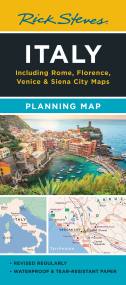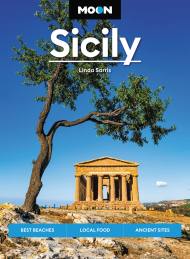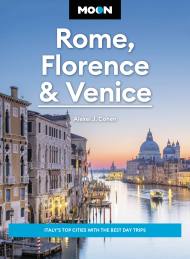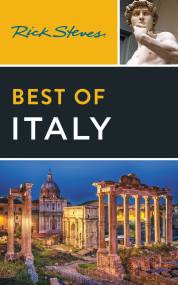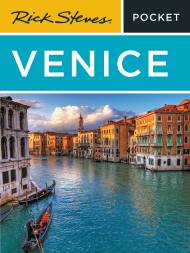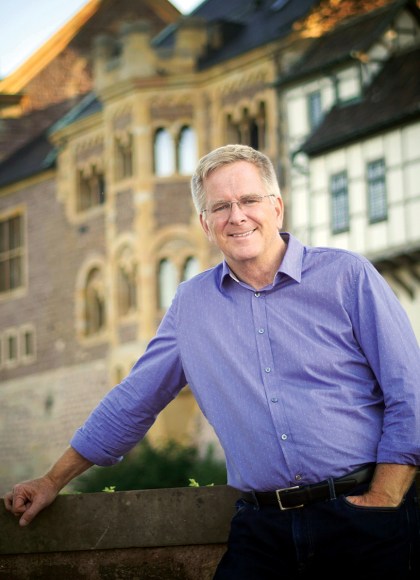Rick Steves Sicily
Contributors
By Rick Steves
Formats and Prices
Price
$21.99Price
$27.99 CADFormat
Format:
- Trade Paperback $21.99 $27.99 CAD
- ebook $15.99 $20.99 CAD
Also available from:
Inside Rick Steves Sicily you'll find:
- Comprehensive coverage for spending a week or more exploring Sicily
- Rick's strategic advice on how to get the most out of your time and money, with rankings of his must-see favorites
- Top sights and hidden gems, from Mount Etna and the Byzantine mosaics of Monreale to the Ballarò street market and Siracusa's puppet museum
- How to connect with culture: Savor seafood-centric cuisine made from ancient recipes, catch an opera performance at the Teatro Massimo, or sample authentic Marsala wine
- Beat the crowds, skip the lines, and avoid tourist traps with Rick's candid, humorous insight
- The best places to eat, sleep, and relax with a glass of local Nero d'Avola
- Self-guided walking tours of lively neighborhoods and incredible museums
- Detailed maps for exploring on the go
- Useful resources including a packing list, a historical overview, and helpful Italian phrases
- Over 450 bible-thin pages include everything worth seeing without weighing you down
- Complete, up-to-date information on Palermo, Cefalù, Trapani and the West Coast, Agrigento and the Valley of the Temples, Ragusa and the Southeast, Siracusa, Catania, Mount Etna, Taormina, and more
Make the most of every day and every dollar with Rick Steves Sicily.
Expanding your trip? Check out Rick Steves Italy.
-
"The country's foremost expert in European travel for Americans."Forbes
-
"Steves is an absolute master at unlocking the hidden gems of the world's greatest cities, towns, and monuments."USA Today
-
“Every country-specific travel guidebook from the Rick Steves publishing empire can be counted upon for clear organization, specificity and timeliness."Society of American Travel Writers
-
"Pick the best accommodations and restaurants from Rick Steves…and a traveler searching for good values will seldom go wrong or be blindsided."NBC News
-
"His guidebooks are approachable, silly, and even subtly provocative in their insistence that Americans show respect for the people and places they are visiting and not the other way around."The New Yorker
-
"Travel, to Steves, is not some frivolous luxury—it is an engine for improving humankind, for connecting people and removing their prejudices, for knocking distant cultures together to make unlikely sparks of joy and insight. Given that millions of people have encountered the work of Steves over the last 40 years, on TV or online or in his guidebooks, and that they have carried those lessons to untold other millions of people, it is fair to say that his life’s work has had a real effect on the collective life of our planet."The New York Times Magazine
-
"[Rick Steves] laces his guides with short and vivid histories and a scholar's appreciation for Renaissance art yet knows the best place to start an early tapas crawl in Madrid if you have kids. His clear, hand-drawn maps are Pentagon-worthy; his hints about how to go directly to the best stuff at the Uffizi, avoid the crowds at Versailles and save money everywhere are guilt-free."TIME Magazine
-
"Steves is a walking, talking European encyclopedia who yearns to inspire Americans to venture 'beyond Orlando.'"Forbes
-
“…he’s become the unofficial guide for entire generations of North American travelers, beloved for his earnest attitude and dad jeans."Outside Magazine
- On Sale
- Dec 5, 2023
- Page Count
- 496 pages
- Publisher
- Rick Steves
- ISBN-13
- 9781641715553
Newsletter Signup
By clicking ‘Sign Up,’ I acknowledge that I have read and agree to Hachette Book Group’s Privacy Policy and Terms of Use


